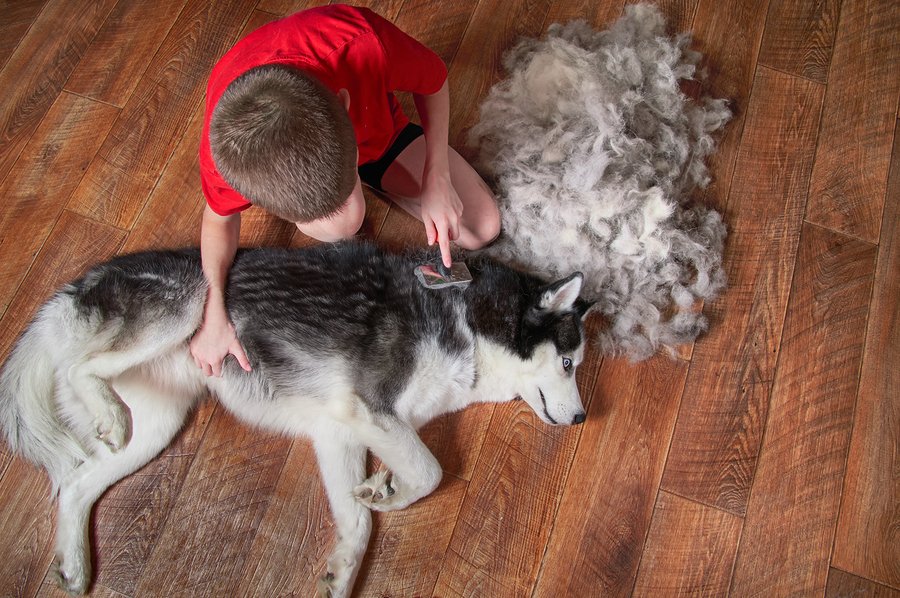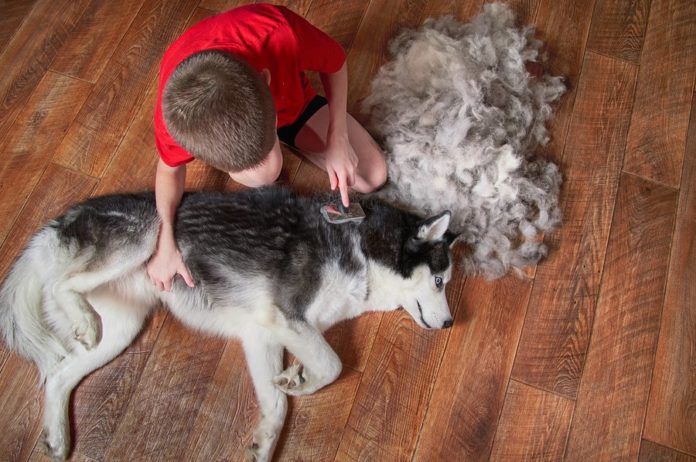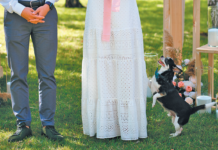
Some dogs are big shedders, and sometimes they shed even more than usual. No owner relishes constantly sweeping up a home full of dog hair “tumbleweed,” but many are also worried it’s a sign of ill health when the shedding ramps up out of nowhere; they raise the issue with us frequently. Is it the sign of a problem?
If your dog retains a normal coat and doesn’t show patches of baldness, his shedding problem simply means you need to get the Swiffer out more. He is fine, even if he has been shedding what seems to be somewhat more than usual.
Granted, veterinary researchers do not know why a healthy dog might shed more one year than another. Hormone secretions play into it, along with other circulating chemicals in a dog’s body, and even his stress level, and those could all vary from year to year. But these variations over time do not indicate abnormalities.
One thing to be aware of is that dogs’ hair often tends to grow in more and shed less as the summer wears on, and die and shed more as the winter wears on. That might seem counterintuitive, because you’d expect a dog’s hair to fall out as the summer gets hotter and hotter and to grow in as the weather gets colder and colder. But it’s about the amount of daylight. The shortest day of the year is December 21st. After that, as the days lengthen, a dog starts to shed a little more in preparation for the warm weather ahead, even though it is still the dead of winter.
Likewise, the longest day of the year is June 21st. As the days shorten after that, a dog might be a little less likely to lose hair as his body prepares for the cold weather coming, even though it might still be July or August. In other words, it’s all about the season to come, not the season we’re in. But it all works out. In any given dog, some follicles are always actively growing, while others are slowing down and others still, are in a non-active phase. The mosaic pattern is what insures that hair is all over the dog’s body at all times.
What can you do about it to keep your house cleaner? Just as the catch-phrase in real estate is “location, location, location,” with dogs and their shedding it’s “brush, brush, brush” (and put the removed hair right in the trash). Remember, dead hairs are not going to go down the drain in the shower, like they do for you. You have to actively remove them so they don’t end up all over your rugs, hardwood floors, furniture, clothing, and car seats. Not only will brushing your dog every single day keep your home neater (some dogs don’t even mind being vacuumed with a wand), it will also assuage your fear that something is wrong. If you assiduously brush every day, remove a lot of hair, and see that your dog’s coat is still full, you will not feel worried that things are amiss with his health.
If all the hair still bothers you even though you always brush, there are two things to consider for your next dog:
1. Dogs with a top coat and an undercoat, like German shepherds, may be among the biggest shedders. Their two different types of hair mean more of their hair is in active growth at any given time, and more dead hairs are being shed.
2. Dogs with curly hair, like poodles and Portuguese water dogs, have the most hair follicles in the active growing phase, relatively speaking. Translation: While they don’t keep all of their hair 100 percent of the time, they don’t shed as much as straight-haired breeds.
These are generalities, of course. With hundreds of breeds of dogs, there are all kinds of variations. But no matter how you cut it, life with a dog means life with hair. The bright side: all that hair is part of what makes them so adorable.





